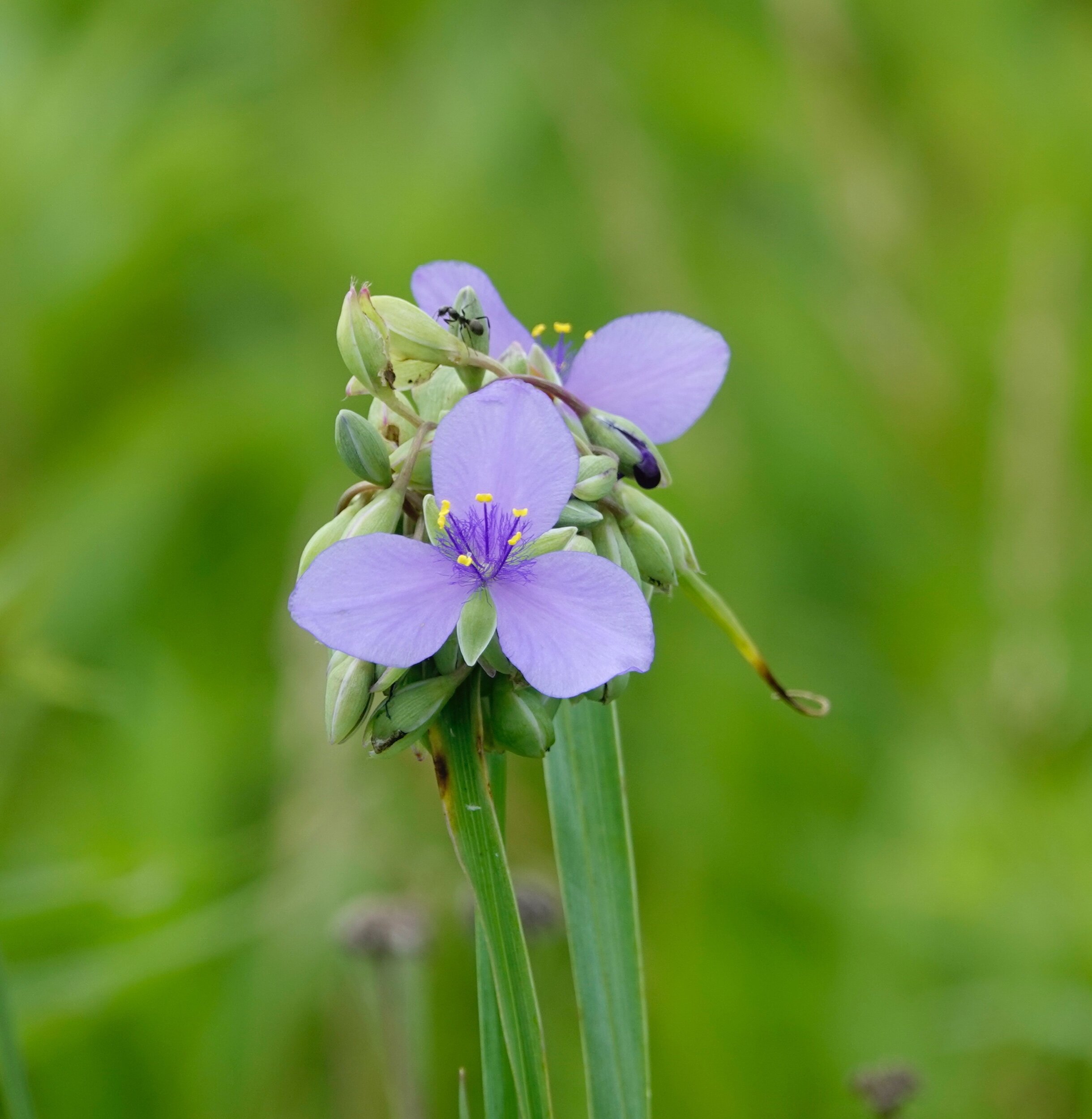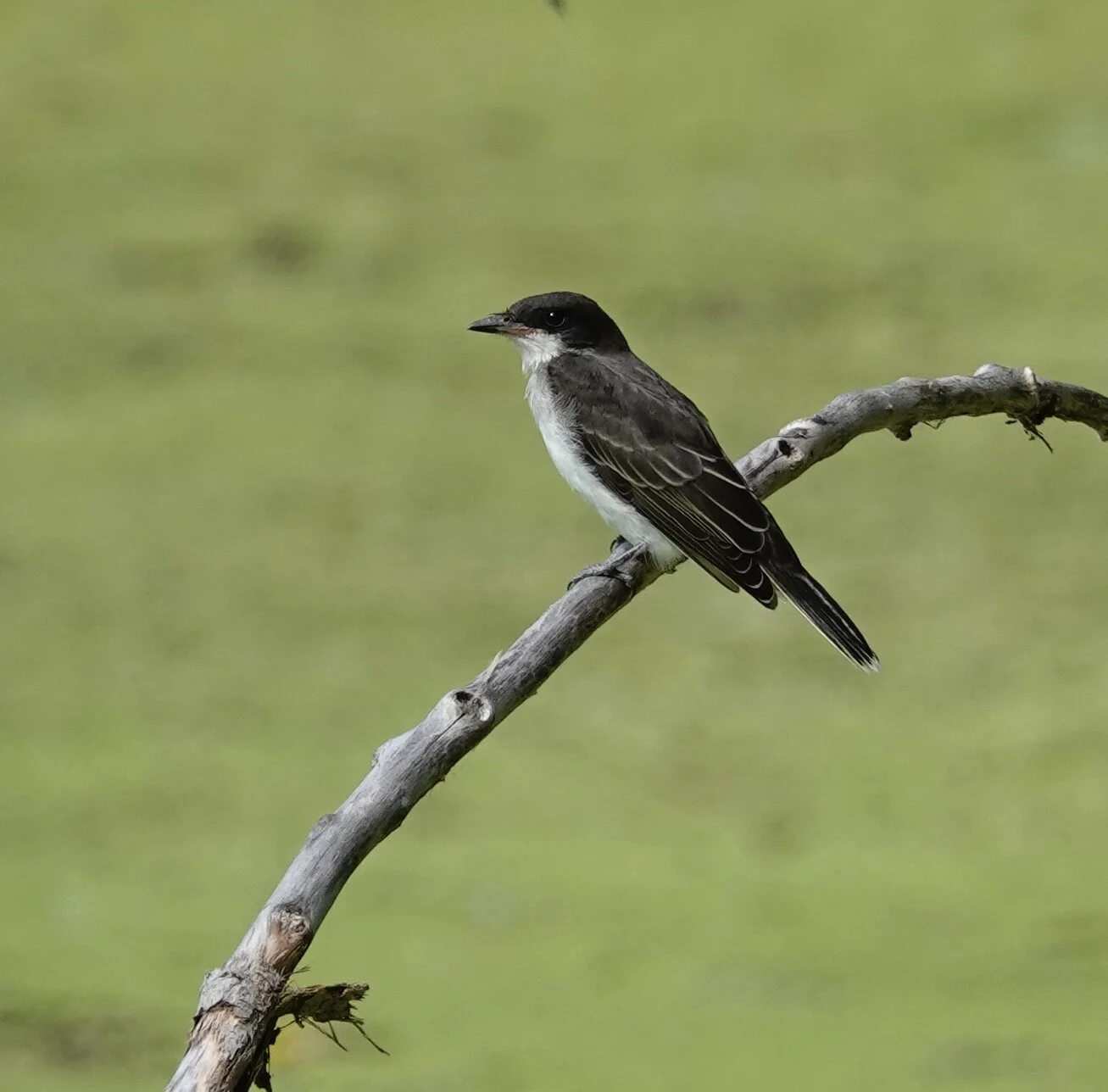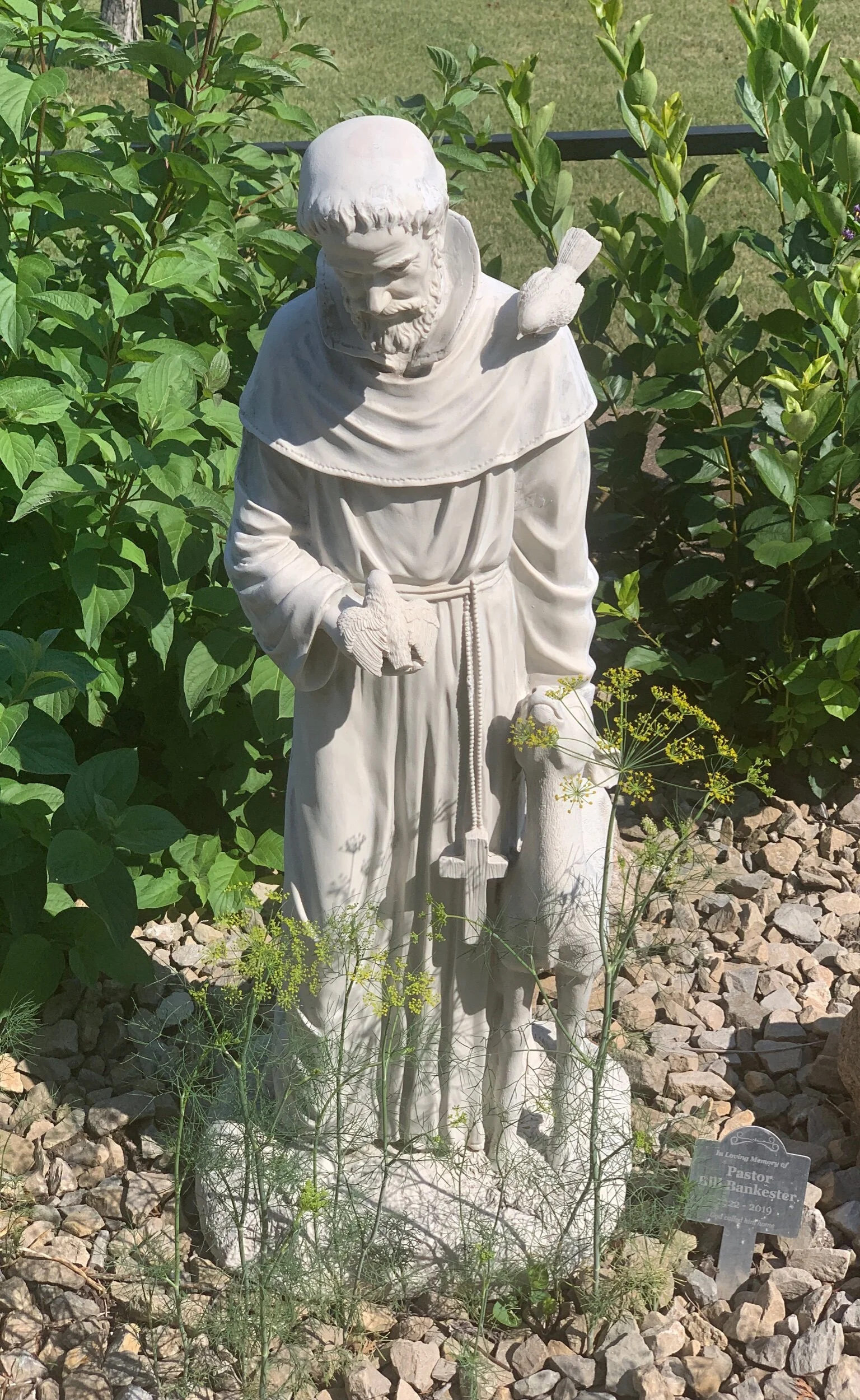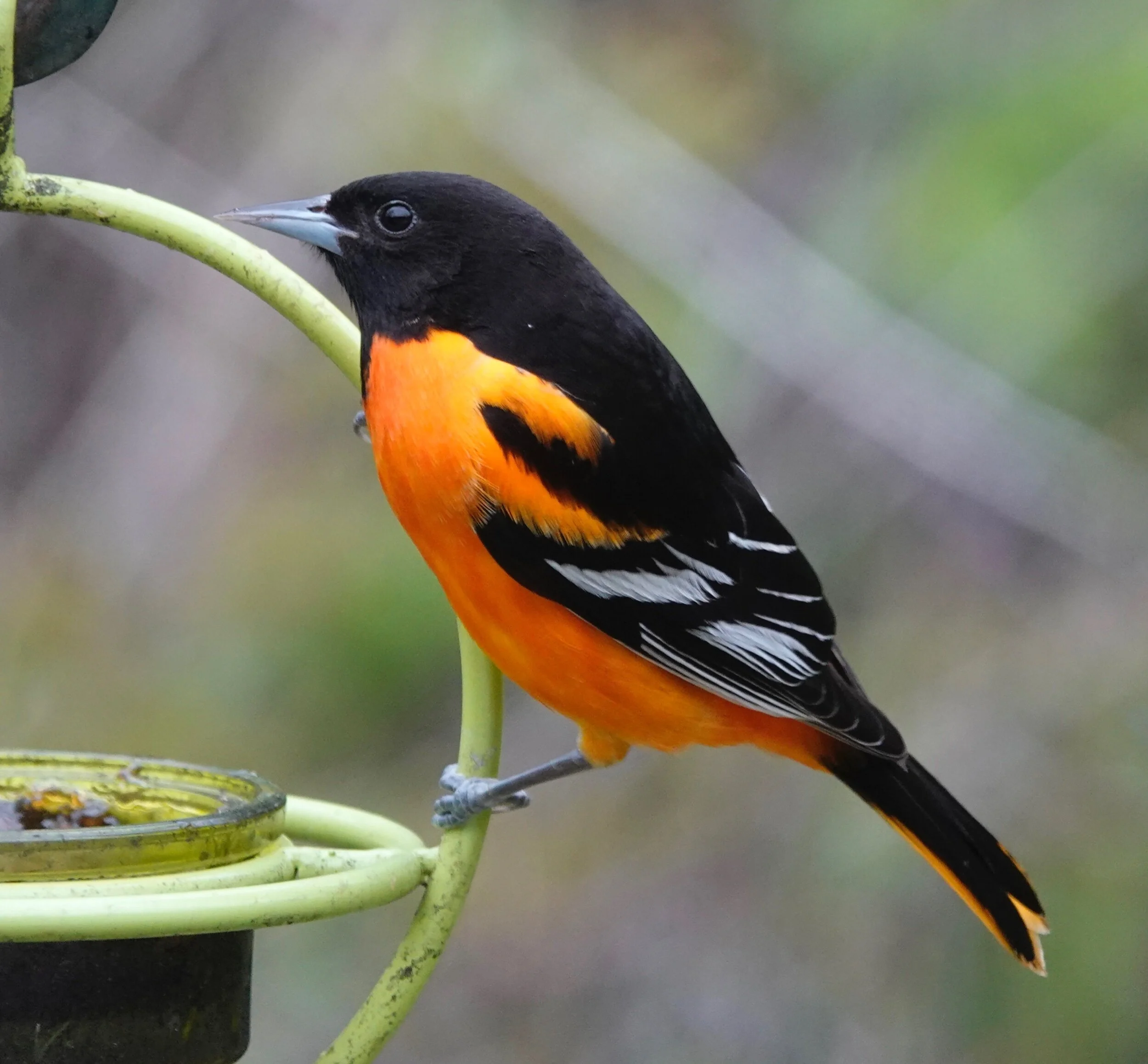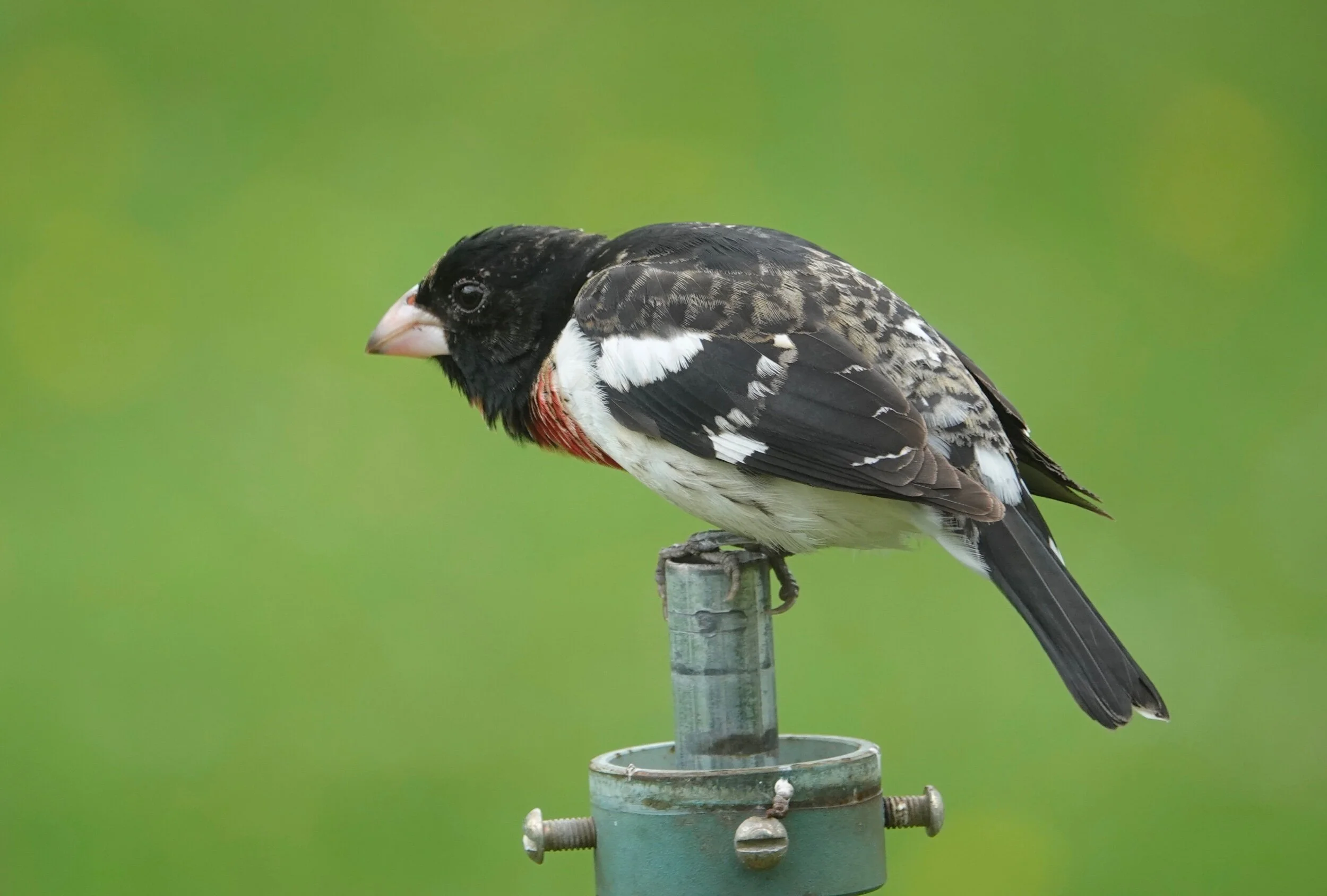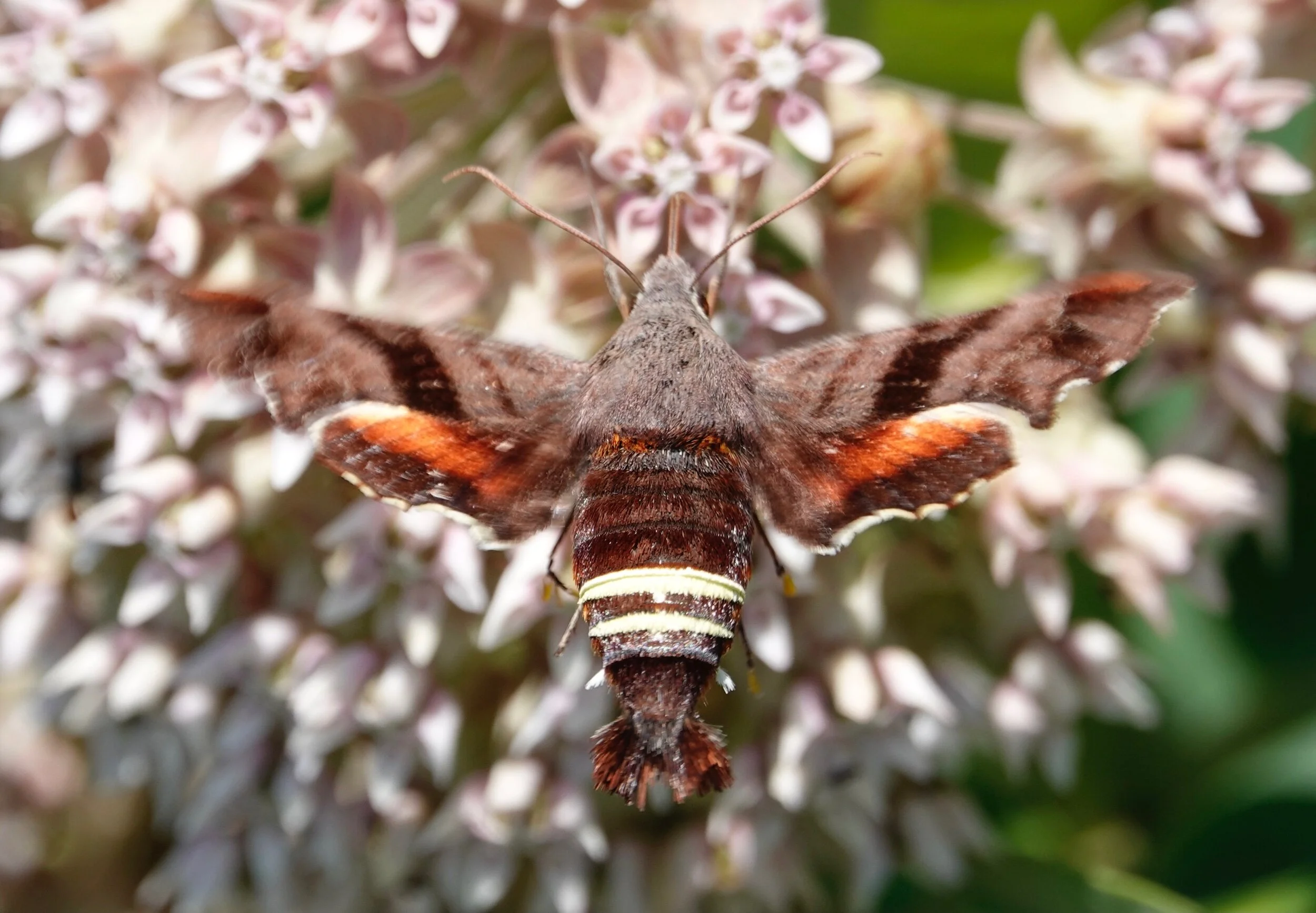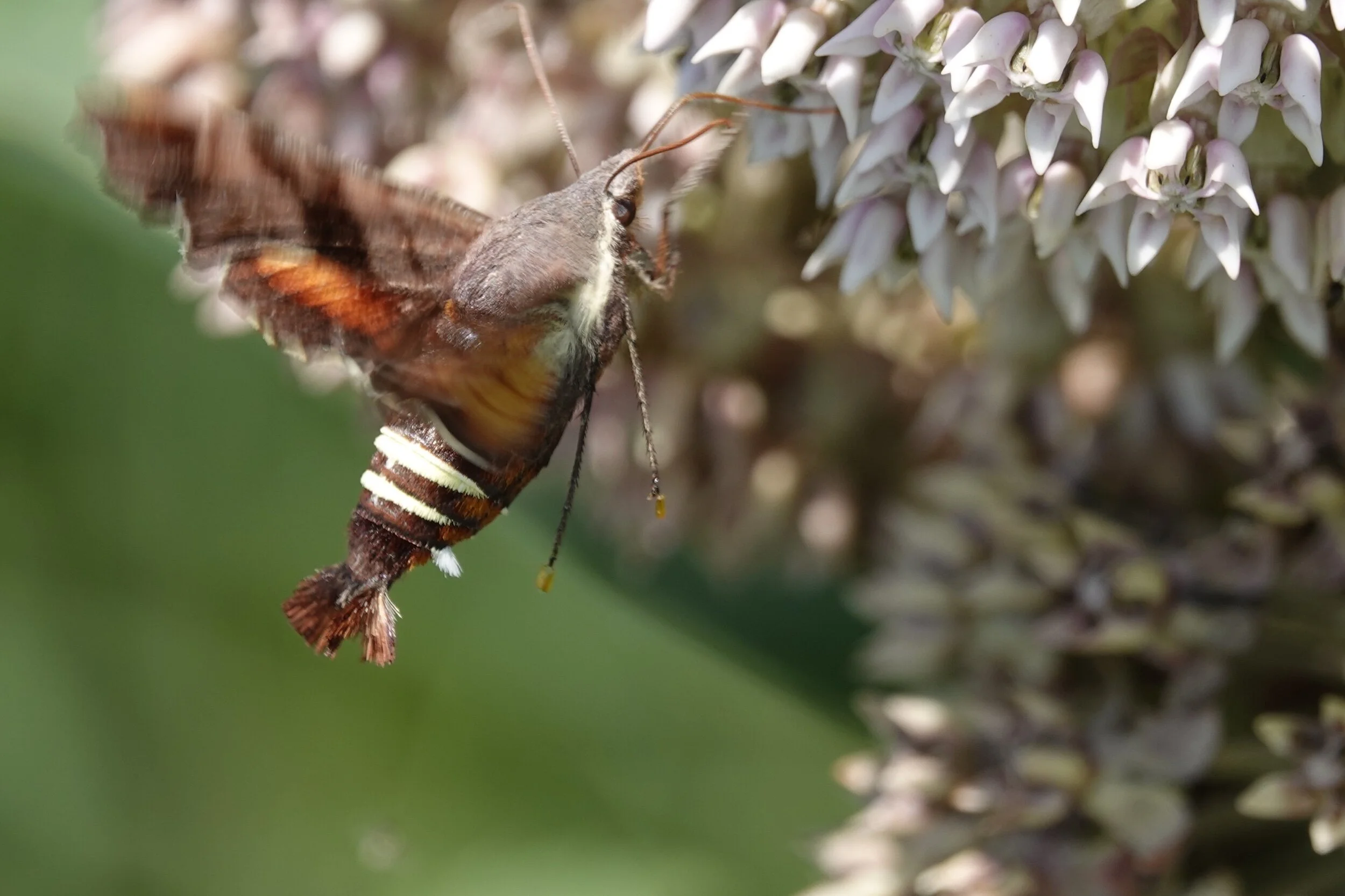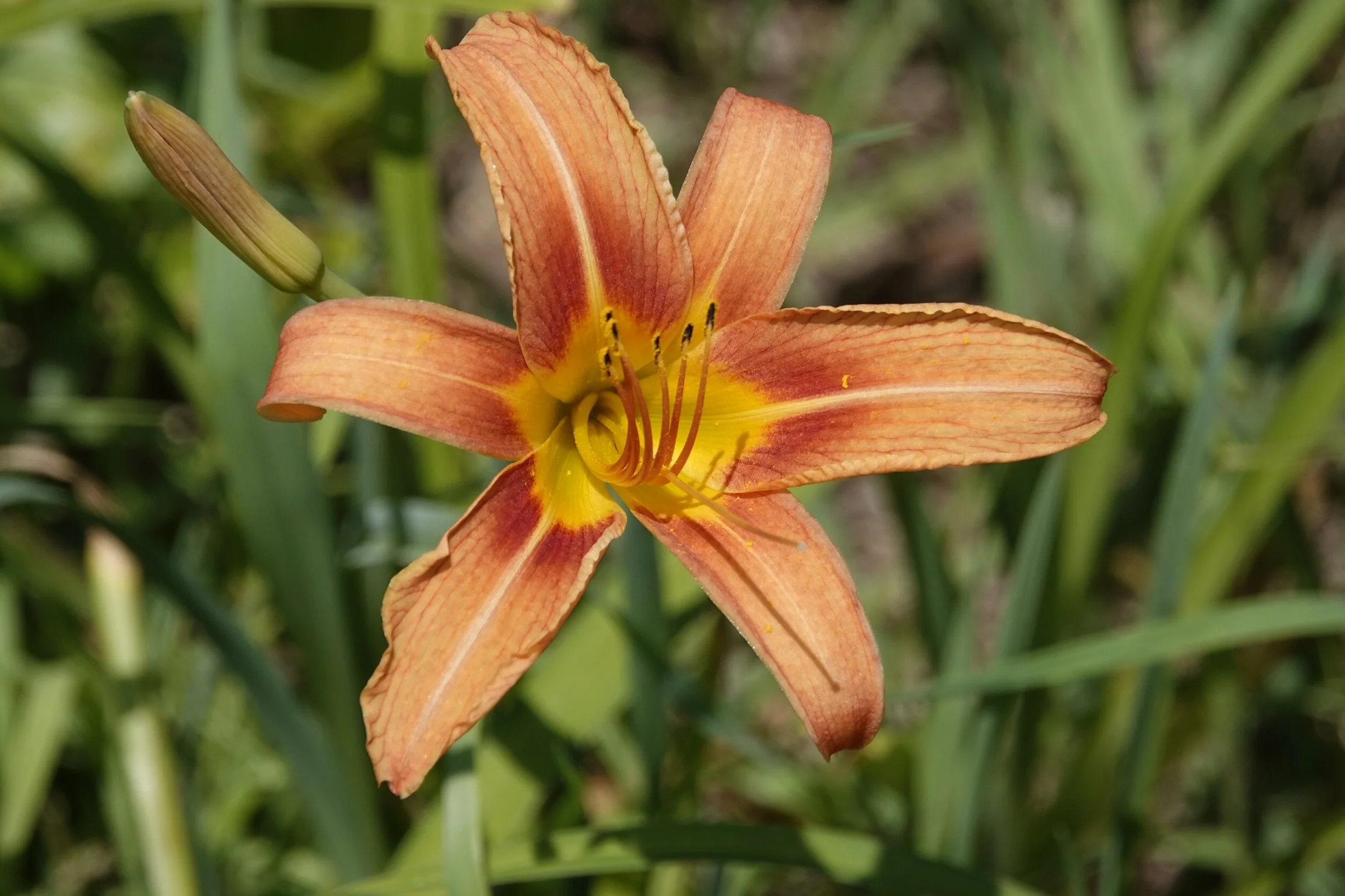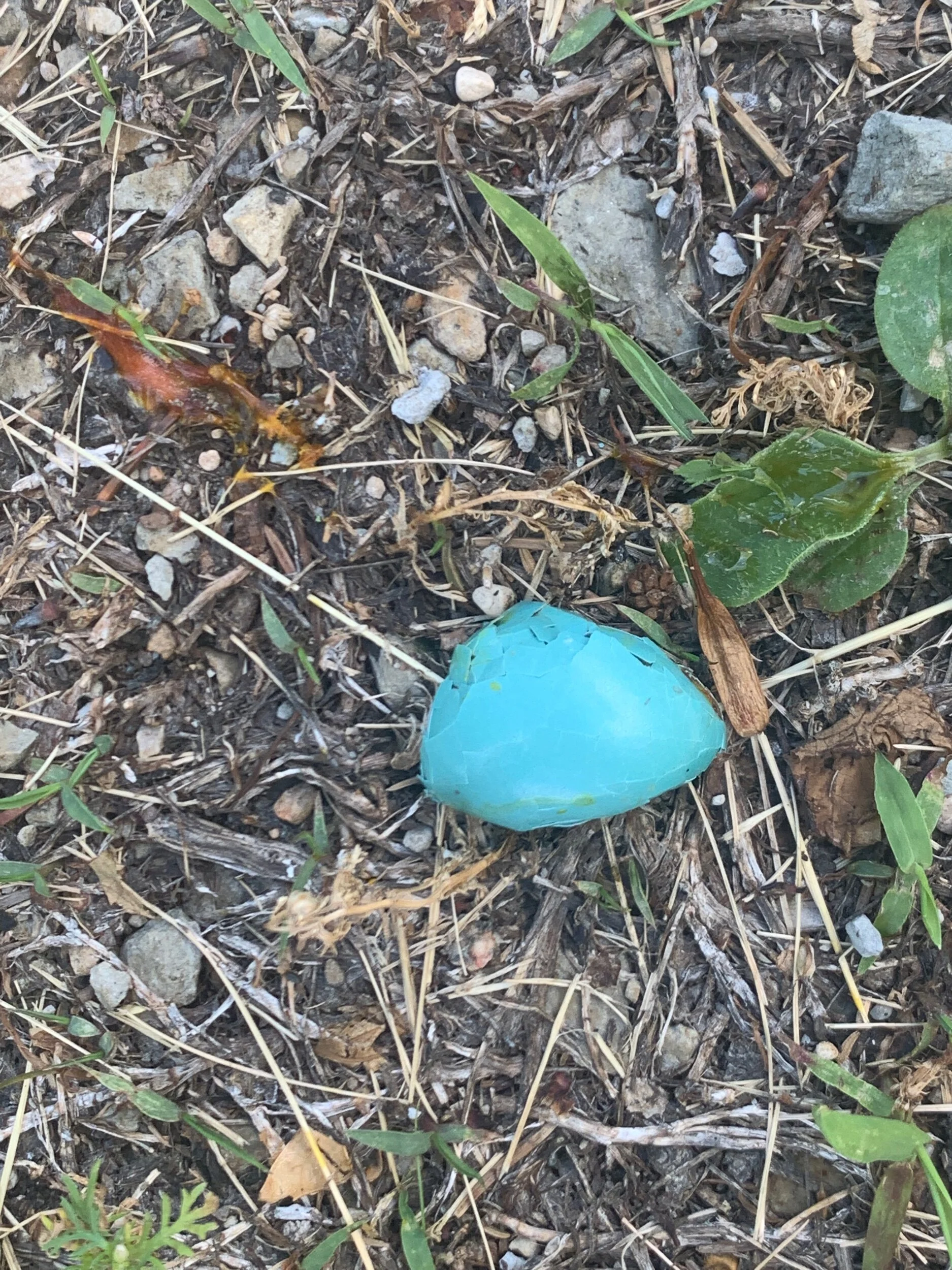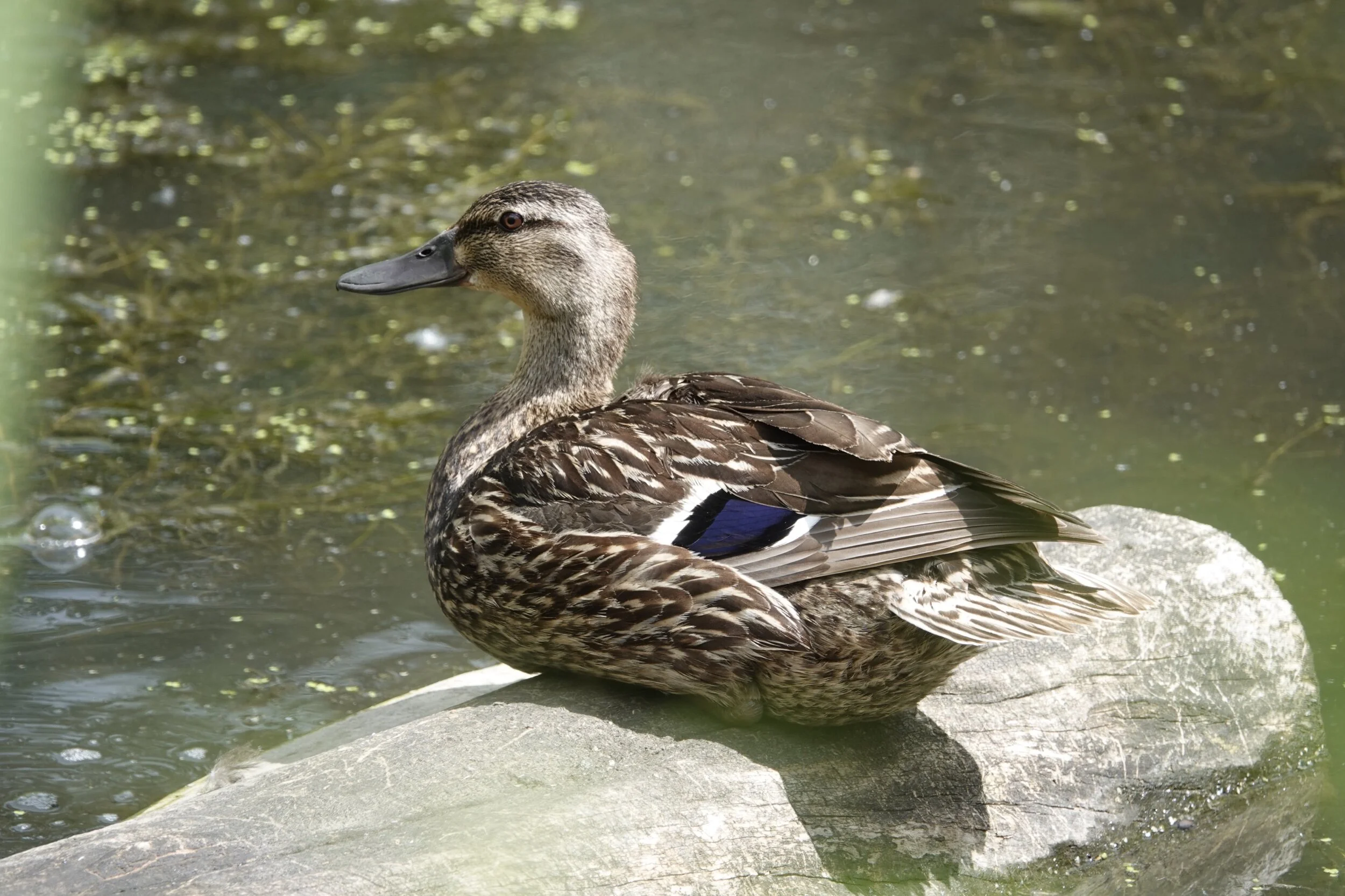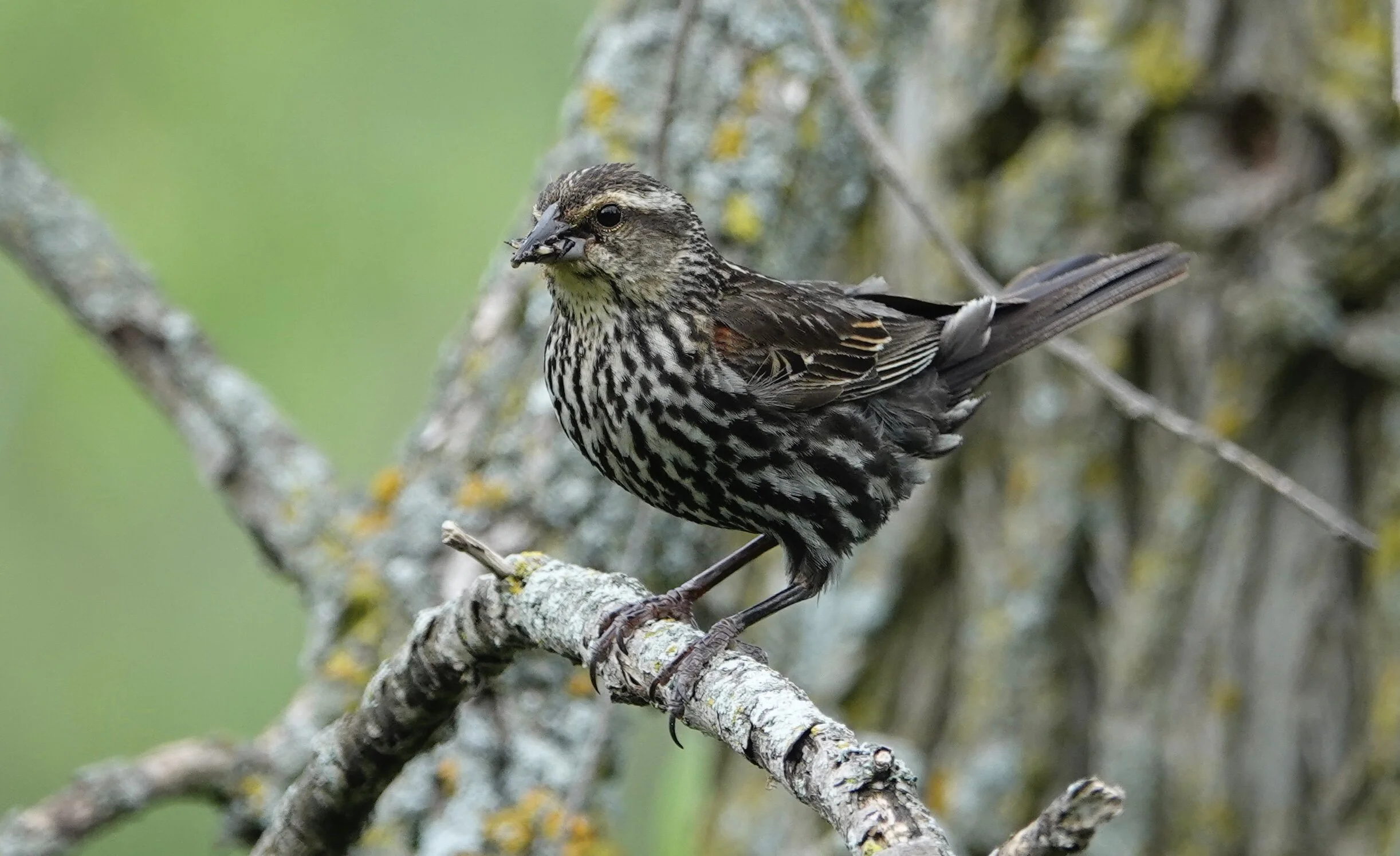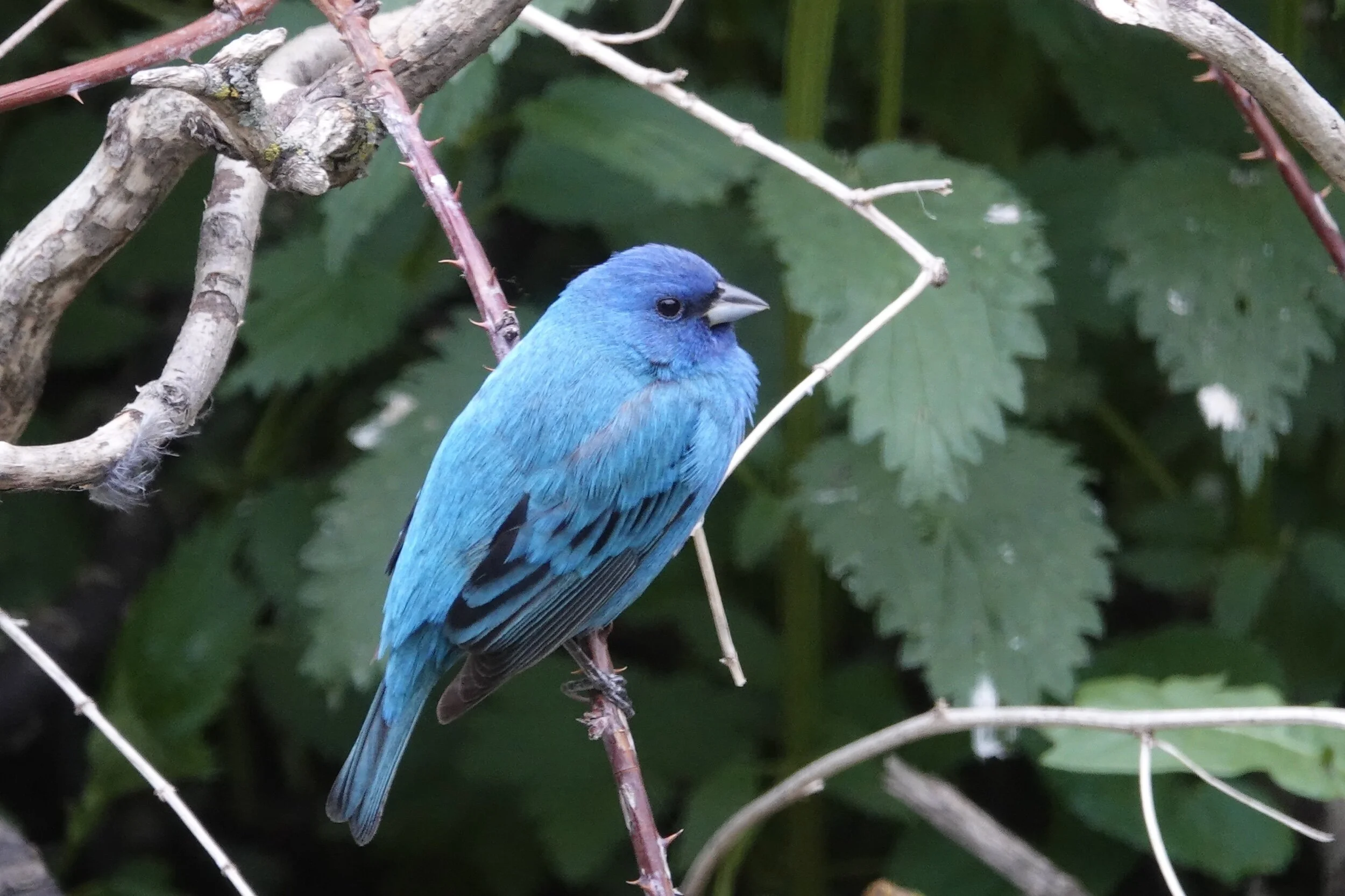Naturally
The cardinals fed at dawn. They avoid crowds. A chickadee is the epitome of a feeder bird—cute, tiny and perky.
The jumbled song of house finches was beautiful music to my ears. I bit a couple of mosquitoes back.
Stephanie Seymour wrote and sang, “Blue jay you made my day And you didn't even try But if you wonder why It's because of all the beauty that I see When you're in front of me.” A blue jay has a gizzard and a throat sac (called a gular pouch). It fills the pouch (observers have counted 70-100 black oil sunflower seeds) and hack up the seeds for consumption or caching later. Reports say its gular pouch can hold up to five acorns.
I saw a Cooper’s hawk in a city. This accipiter mainly eats birds. Studies have found that small birds are safer around Cooper’s hawks than are medium-sized birds like European starlings, mourning doves, rock pigeons, robins, jays, northern flickers, quail, pheasants, grouse and chickens, which are common targets. The female hawk is larger (about 1/3) than the male, a condition called sexual dimorphism, and because of this the female hunts larger birds than does the male.
I don’t see white-tailed jackrabbits around my place anymore. I grew up with cattle dogs. They were smart but insisted on chasing the big hares that leaped 10 feet and ran 40 mph. I saw jackrabbits eat clover, alfalfa, dandelion and grasses.
Q&A
“What do rabbits eat?” I’ve heard eastern cottontail rabbits described as artful dodgers. In winter, they feed on seeds, twigs, bark and tree seedlings. They also practice coprophagy, eating their own vitamin-rich droppings. I can tell where a rabbit had been eating, as the plant had suffered a 45-degree-angle cut. Deer tear away at plants. Rabbits love the tender shoots of various plants—crabgrass, sow thistle, dock, plantain, red clover, white clover and dandelion. Whether you consider them pretty, pesty or perky, dandelion plants can live 5-10 years. Dandelions have wide-spreading roots that loosen hard-packed soil, aerate the earth and help reduce erosion. Deep taproots pull nutrients from deep in the soil and make them available to other plants. They’re used by pollinators. Goldfinches, song and chipping sparrows, indigo buntings, towhees eat the seeds. Rabbits, porcupines, ground squirrels, mice and prairie dogs eat the seeds, foliage and root, while deer browse on dandelions.
“Are bug zappers effective?” A zapper participates in an indiscriminate slaughter of insects, many of them beneficial. A University of Delaware study found that 0.22% of the kills were biting insects. Research showed your chances of being bitten by a mosquito increase when you are near a bug zapper. The light is attractive and so are you.
“What birds eat cicadas?” There are many—chickadees, robins, bluebirds, eastern kingbirds, yellow-billed cuckoos, black-billed cuckoos, house sparrows, red-bellied woodpeckers, red-headed woodpeckers, grackles, red-winged blackbirds, mallards, cardinals, wild turkeys and others.
“Does the male bluebird incubate eggs?” Only the female incubates as male bluebirds don’t develop a brood patch.
“How long is a snapping turtle’s neck?” Common snapping turtles have long necks that reach up to two-thirds the length of their shells, making handling them dangerous. They’re capable of inflicting a painful bite, but a human’s bite is stronger.
“How long will raccoons remain with their mother?” One man’s garbage is a raccoon’s treasure. The kits are weaned in 2-3 months and remain with their mother for up to a year. "Ain't no thing like me except me!” said Rocket Raccoon in “Guardians of the Galaxy.”
“What’s one good thing about having wolves around?” In a short time after wolves had colonized an area, deer-vehicle collisions dropped 24% according to Dominic Parker, a natural resources economist at the University of Wisconsin in a study published in the Proceedings of the National Academy of Sciences. Thinning of the deer population by wolves and behavior changes in fearful deer are factors in the decline. “Wolves use linear features of a landscape as travel corridors, like roads, pipelines and stream beds. Deer learn this and adapt by staying away,” said Parker.
Annie Mattson of Albert Lea asked how long eagles are in a nest. Incubation for bald eagles is about 35 days. Eggs hatch in the order they were laid. Eaglets fledge in 10-14 weeks.
Customer comments
I wrote, “I watched a common nighthawk slice the sky above a ballpark in New Ulm and realized the bird had become the baseball game.” Thomas Schenk of St. Paul wrote, “Al, if you had watched a bat chasing a fly, it would have been a kind of reverse baseball game.”
Thanks for stopping by
“Every generation revolts against its fathers and makes friends with its grandfathers.”—Lewis Mumford
“The happiest people I know are always evaluating and improving themselves. The unhappy people are usually evaluating and judging others.”—Lisa Villa Prosen
Do good.
@Al Batt 2021















































